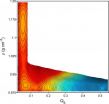(Press-News.org) Washington, DC—As more people are diagnosed with diabetes and other hormone conditions, a growing shortage of endocrinologists could force patients to wait longer to see a doctor, according to a new Endocrine Society workforce analysis published in the Journal of Clinical Endocrinology & Metabolism (JCEM).
Endocrinologists are specially trained physicians who diagnose diseases related to the glands. They specialize in treating diabetes, obesity, osteoporosis, thyroid disorders, adrenal diseases, and a variety of other conditions related to hormones.
The analysis found the available supply of endocrinologists who treat adult patients will exceed the growing demand for their services for at least the next 10 years. As the population ages, the number of older individuals who develop type 2 diabetes or other endocrine conditions is expected to climb. In addition, a significant portion of current endocrinologists are Baby Boomers likely to retire in the next decade.
"There already is a significant shortage of adult endocrinologists. Without a concerted effort to recruit more endocrinologists, the gap between the number of endocrinologists and the demand for their care will increase even further and patients will struggle to get the care they need," said Endocrine Society Past President Robert A. Vigersky, MD, one of the study's authors. "The analysis found the number of new entrants to the workforce must grow at a rate of 14 percent a year to close the gap in five years. Improved reimbursement rates that reflect the true value of endocrinologists' care are required to encourage more physicians to choose endocrinology as a specialty."
The researchers developed the endocrinologist workforce model using data from proprietary and public databases. The Society conducted an online survey of board-certified endocrinologists and convened a Technical Expert Panel to provide additional data.
The analysis found there is currently a shortage of about 1,500 adult and 100 pediatric full-time endocrinologists nationwide. The demand for pediatric endocrinologists is expected to be met by 2016 as the workforce grows. The gap between supply and demand for adult endocrinologists, however, is expected to remain the same or grow worse as more people are diagnosed with endocrine conditions.
This could lead to longer wait times for patients seeking appointments. The Society's survey found the average wait time for adults making a non-urgent appointment with an endocrinologist was 37 days in 2012. The average wait remained unchanged from 1999, despite a 52 percent increase in the number of board-certified endocrinologists serving adults.
One factor that discourages physicians from specializing in endocrinology is compensation rates. Since much of the care they provide is not based around specific procedures, endocrinologists tend to earn less than their counterparts in specialties such as noninvasive cardiology and gastroenterology.
The analysis also revealed significant changes in the demographics of the endocrinology field. A growing number of women are entering the specialty, and many Baby Boomers will be retiring by 2020. The next generation of endocrinologists also are working fewer hours and seeing fewer patients in an average week than their predecessors.
"Like professionals in other industries, endocrinologists are seeking work-life balance," Vigersky said. "This trend means even more trained endocrinologists are required to serve the growing patient population."
INFORMATION:
Other authors of the study include: incoming Society President-Elect Lisa Fish of Hennepin County Medical Center in Minneapolis, MN; Paul Hogan of The Lewin Group in Falls Church, VA; Society Secretary-Treasurer Kenneth H. Hupart of Nassau University Medical Center in East Meadow, NY; Stephanie Kutler of the Endocrine Society; Paul W. Ladenson of the Johns Hopkins University School of Medicine in Baltimore, MD; Michael McDermott of the University of Colorado Hospital in Denver, CO; and Andrew Stewart of Mt. Sinai School of Medicine in New York, NY.
The study, "The Clinical Endocrinology Workforce: Current Status and Future Projections of Supply and Demand," was published online, ahead of print.
Founded in 1916, the Endocrine Society is the world's oldest, largest and most active organization devoted to research on hormones and the clinical practice of endocrinology. Today, the Endocrine Society's membership consists of over 17,000 scientists, physicians, educators, nurses and students in more than 100 countries. Society members represent all basic, applied and clinical interests in endocrinology. The Endocrine Society is based in Washington, DC. To learn more about the Society and the field of endocrinology, visit our site at http://www.endocrine.org. Follow us on Twitter at https://twitter.com/#!/EndoMedia.
Demand for diabetes, thyroid care outpaces supply of endocrinologists
Workforce analysis finds shortage likely to grow worse in next decade
2014-06-18
ELSE PRESS RELEASES FROM THIS DATE:
Scientists take first dip into water's mysterious 'no-man's land'
2014-06-18
Scientists at the Department of Energy's SLAC National Accelerator Laboratory have made the first structural observations of liquid water at temperatures down to minus 51 degrees Fahrenheit, within an elusive "no-man's land" where water's strange properties are super-amplified.
The research, made possible by SLAC's Linac Coherent Light Source (LCLS) X-ray laser and reported June 18 in Nature, opens a new window for exploring liquid water in these exotic conditions, and promises to improve our understanding of its unique properties at the more natural temperatures and ...
UEA researchers discover Achilles' heel in antibiotic-resistant bacteria
2014-06-18
Scientists at the University of East Anglia have made a breakthrough in the race to solve antibiotic resistance.
New research published today in the journal Nature reveals an Achilles' heel in the defensive barrier which surrounds drug-resistant bacterial cells.
The findings pave the way for a new wave of drugs that kill superbugs by bringing down their defensive walls rather than attacking the bacteria itself. It means that in future, bacteria may not develop drug-resistance at all.
The discovery doesn't come a moment too soon. The World Health Organization has warned ...
Identifying opposite patterns of climate change between the middle latitude areas
2014-06-18
Korean research team revealed conflicting climate change patterns between the middle latitude areas of the Northern and Southern Hemispheres in relation to glacial and interglacial cycles which have been puzzled for the past 60 years.
Doctor Kyoung-nam Jo from the Quaternary Geology Department of the Korea Institute of Geoscience and Mineral Resources(KIGAM) revealed a clue for solving the riddle of past global climate change in his paper titled 'Mid-latitudinal interhemispheric hydrologic seesaw over the past 550,000 years' which was featured in the journal Nature.
This ...
Evolutionary biology: Why cattle only have 2 toes
2014-06-18
During evolutionary diversification of vertebrate limbs, the number of toes in even-toed ungulates such as cattle and pigs was reduced and transformed into paired hooves. Scientists at the University of Basel have identified a gene regulatory switch that was key to evolutionary adaption of limbs in ungulates. The study provides fascinating insights into the molecular history of evolution and is published by Nature today.
The fossil record shows that the first primitive even-toed ungulates had legs with five toes (=digits), just like modern mice and humans. During their ...
Scientists break the genetic code for diabetes in Greenland
2014-06-18
VIDEO:
New Danish genetics research explains the high incidence of type 2 diabetes in the Greenlandic population. The ground-breaking findings have just been published in the prestigious scientific journal Nature....
Click here for more information.
A spectacular piece of detective work has mapped a special gene variant among Greenlanders which plays a particularly important role in the development of type 2 diabetes. The results have been published in Nature and can be ...
Familiar yet strange: Water's 'split personality' revealed by computer model
2014-06-18
Seemingly ordinary, water has quite puzzling behavior. Why, for example, does ice float when most liquids crystallize into dense solids that sink?
Using a computer model to explore water as it freezes, a team at Princeton University has found that water's weird behaviors may arise from a sort of split personality: at very cold temperatures and above a certain pressure, water may spontaneously split into two liquid forms.
The team's findings were reported in the journal Nature.
"Our results suggest that at low enough temperatures water can coexist as two different ...
Collecting light with artificial moth eyes
2014-06-18
Rust – iron oxide – could revolutionise solar cell technology. This usually unwanted substance can be used to make photoelectrodes which split water and generate hydrogen. Sunlight is thereby directly converted into valuable fuel rather than first being used to generate electricity. Unfortunately, as a raw material iron oxide has its limitations. Although it is unbelievably cheap and absorbs light in exactly the wavelength region where the sun emits the most energy, it conducts electricity very poorly and must therefore be used in the form of an extremely thin film in ...
Breathalyzer test may detect deadliest cancer
2014-06-18
Lung cancer causes more deaths in the U.S. than the next three most common cancers combined (colon, breast, and pancreatic). The reason for the striking mortality rate is simple: poor detection. Lung cancer attacks without leaving any fingerprints, quietly afflicting its victims and metastasizing uncontrollably – to the point of no return.
Now a new device developed by a team of Israeli, American, and British cancer researchers may turn the tide by both accurately detecting lung cancer and identifying its stage of progression. The breathalyzer test, embedded with a "NaNose" ...
Scripps Research Institute scientists reveal molecular 'yin-yang' of blood vessel growth
2014-06-18
LA JOLLA, CA—June 18, 2014 —Biologists at The Scripps Research Institute (TSRI) have discovered a crucial process that regulates the development of blood vessels. The finding could lead to new treatments for disorders involving abnormal blood vessel growth, including common disorders such as diabetic retinopathy and cancer.
"Essentially we've shown how the protein SerRS acts as a brake on new blood vessel growth and pairs with the growth-promoting transcription factor c-Myc to bring about proper vascular development," said TSRI Professor Xiang-Lei Yang. "They act as the ...
Inflammation in fat tissue helps prevent metabolic disease
2014-06-18
DALLAS – June 18, 2014 – Chronic tissue inflammation is typically associated with obesity and metabolic disease, but new research from UT Southwestern Medical Center now finds that a level of "healthy" inflammation is necessary to prevent metabolic diseases, such as fatty liver.
"There is such a thing as 'healthy' inflammation, meaning inflammation that allows the tissue to grow and has overall benefits to the tissue itself and the whole body," said Dr. Philipp Scherer, Director of the Touchstone Center for Diabetes Research and Professor of Internal Medicine and Cell ...
LAST 30 PRESS RELEASES:
Dynamically reconfigurable topological routing in nonlinear photonic systems
Crystallographic engineering enables fast low‑temperature ion transport of TiNb2O7 for cold‑region lithium‑ion batteries
Ultrafast sulfur redox dynamics enabled by a PPy@N‑TiO2 Z‑scheme heterojunction photoelectrode for photo‑assisted lithium–sulfur batteries
Optimized biochar use could cut China’s cropland nitrous oxide emissions by up to half
Neural progesterone receptors link ovulation and sexual receptivity in medaka
A new Japanese study investigates how tariff policies influence long-run economic growth
Mental trauma succeeds 1 in 7 dog related injuries, claims data suggest
Breastfeeding may lower mums’ later life depression/anxiety risks for up to 10 years after pregnancy
Study finds more than a quarter of adults worldwide could benefit from GLP-1 medications for weight loss
Hobbies don’t just improve personal lives, they can boost workplace creativity too
Study shows federal safety metric inappropriately penalizes hospitals for lifesaving stroke procedures
Improving sleep isn’t enough: researchers highlight daytime function as key to assessing insomnia treatments
Rice Brain Institute awards first seed grants to jump-start collaborative brain health research
Personalizing cancer treatments significantly improve outcome success
UW researchers analyzed which anthologized writers and books get checked out the most from Seattle Public Library
Study finds food waste compost less effective than potting mix alone
UCLA receives $7.3 million for wide-ranging cannabis research
Why this little-known birth control option deserves more attention
Johns Hopkins-led team creates first map of nerve circuitry in bone, identifies key signals for bone repair
UC Irvine astronomers spot largest known stream of super-heated gas in the universe
Research shows how immune system reacts to pig kidney transplants in living patients
Dark stars could help solve three pressing puzzles of the high-redshift universe
Manganese gets its moment as a potential fuel cell catalyst
“Gifted word learner” dogs can pick up new words by overhearing their owners’ talk
More data, more sharing can help avoid misinterpreting “smoking gun” signals in topological physics
An illegal fentanyl supply shock may have contributed to a dramatic decline in deaths
Some dogs can learn new words by eavesdropping on their owners
Scientists trace facial gestures back to their source. before a smile appears, the brain has already decided
Is “Smoking Gun” evidence enough to prove scientific discovery?
Scientists find microbes enhance the benefits of trees by removing greenhouse gases
[Press-News.org] Demand for diabetes, thyroid care outpaces supply of endocrinologistsWorkforce analysis finds shortage likely to grow worse in next decade






